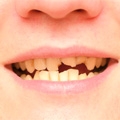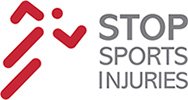More than five million teeth are knocked out every year in children and adults, according to the American Association of Endodontists. Even if teeth are not completely dislodged, they can be loosened or dislocated as well as broken. Many of these incidents occur during sporting events, especially contact sports.
If a dental trauma has occurred, a team physician or athletic trainer should inspect the teeth for any obvious loss or lack of symmetry and then check for tenderness or abnormal motion. An emergency dental visit should be scheduled right away. If the tooth is completely dislodged from the mouth, current recommendations include the following:
- If the athlete is a young child with complete loss of a primary (baby) tooth, dentists should not replace the tooth. This is because replacing the tooth and the associated healing response may interfere with development of a permanent tooth.
- For loss of a permanent tooth, the athlete should act quickly, the sooner the tooth can be placed back in the socket, the better the chances of survival.
- Pick up the tooth by the chewing surface (crown) not the root, to avoid damage to the tooth.
- Gently rinse the tooth with clean water or saliva to remove any dirt and immediately place it back into the socket if possible, holding it there with a clean finger or by gently biting down.
- Current guidelines suggest getting in to see a dentist for an emergency appointment within 30 minutes, if possible. Sometimes the tooth will still survive even if it has been out of the mouth over an hour.
- Teeth need to be kept moist. If you cannot put the dislodged tooth back and need to transport it to the dentist appointment, it’s best not to wrap it in cloth or tissue paper.
- After rinsing, put the loose tooth in the athlete’s mouth if possible, between the cheek and gum, or carry it in a clean container with the athlete’s saliva, milk, or saline (not regular tap water). There are also commercially available "emergency tooth preservation kits," which include a container filled with an approved transport solution.
At the appointment, the dentist will typically X-ray and examine the teeth.
They may clean and replant the tooth (if not already done), splint the loose tooth, and then monitor over the ensuing weeks or months to see if the tooth survives.
It is often said that "an once of prevention is worth a pound of cure," so while wearing a protective mouth guard during sports may not prevent all dental trauma, it is the most effective way an athlete can reduce their risk of a significant injury.














